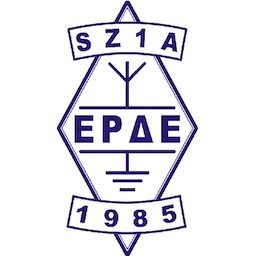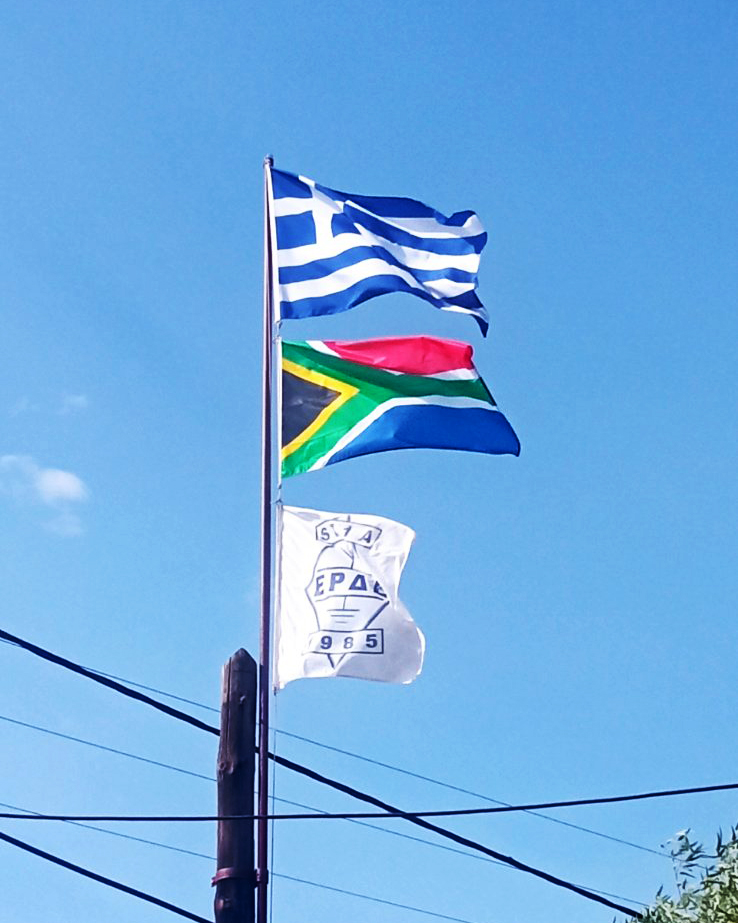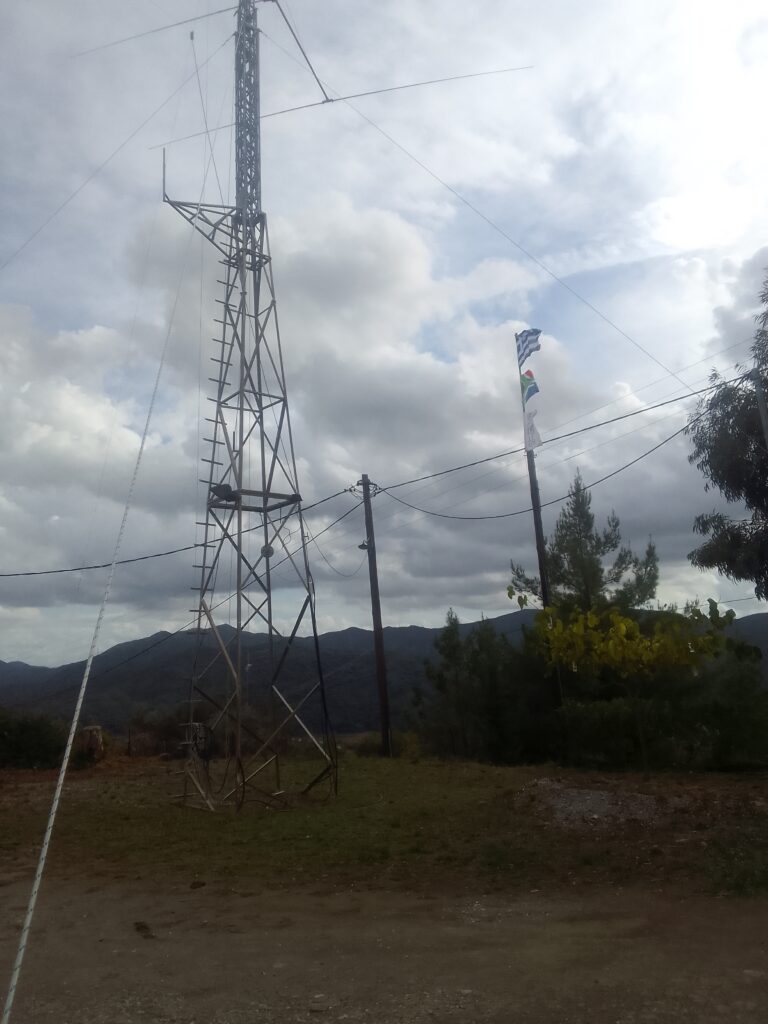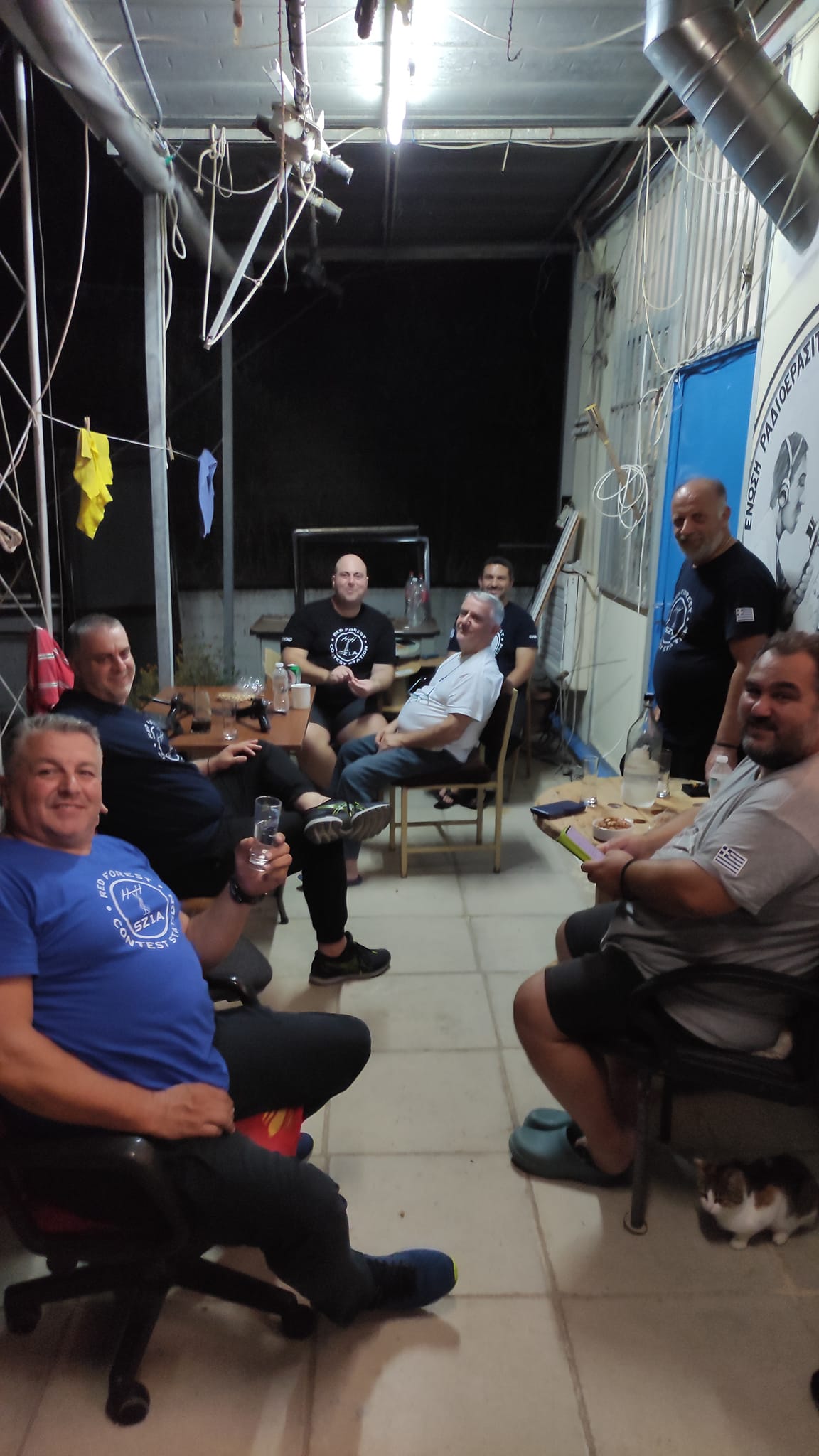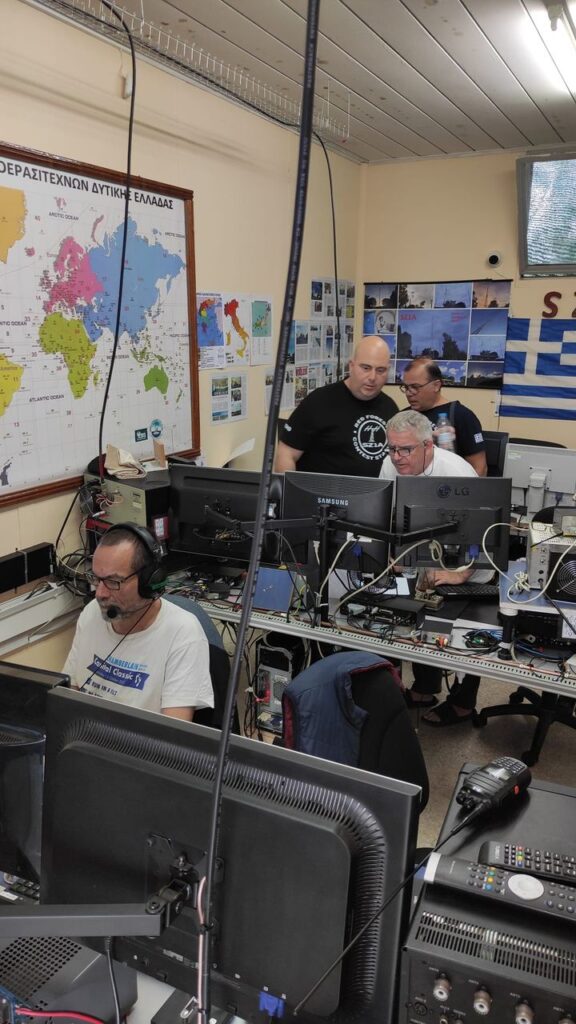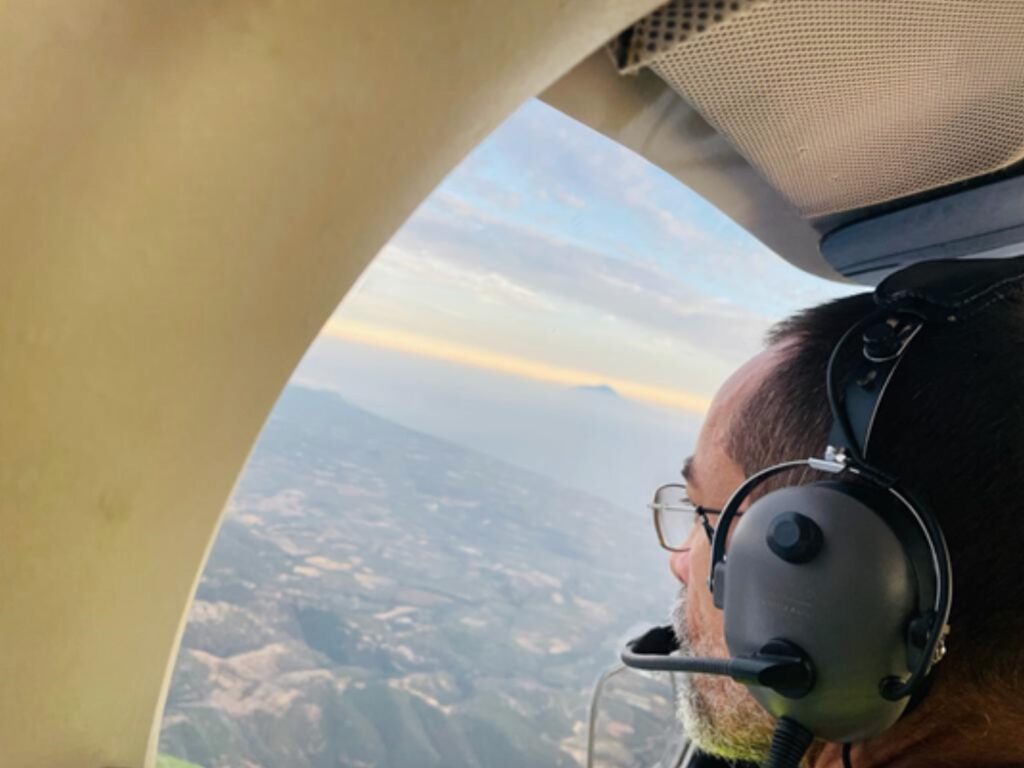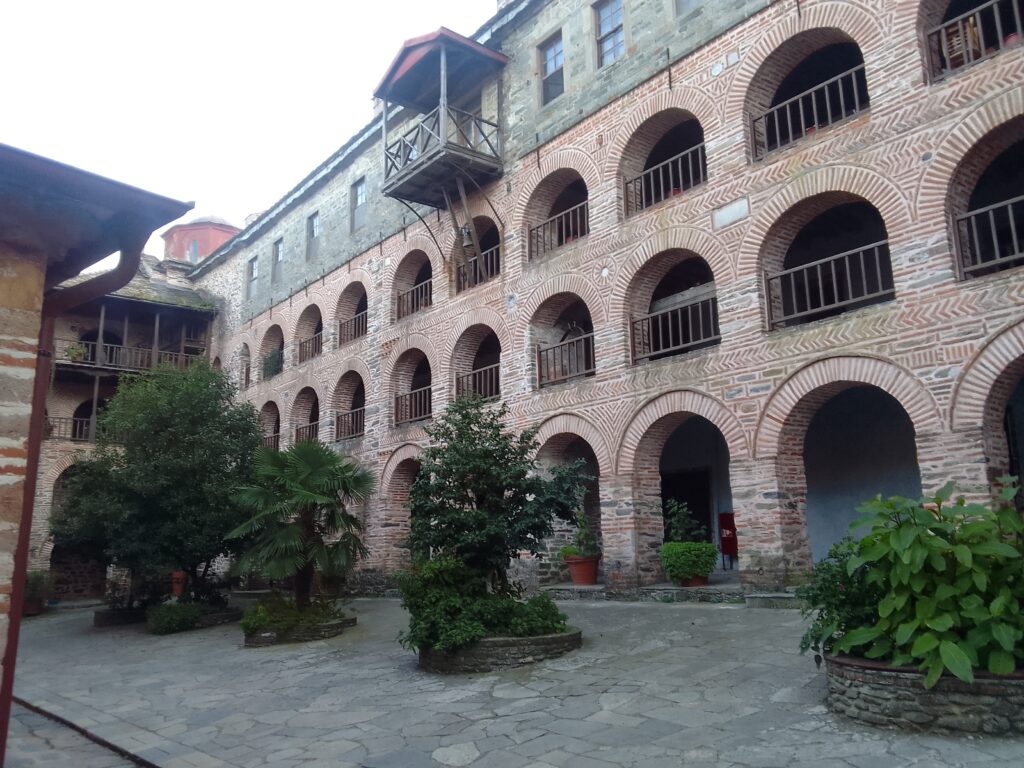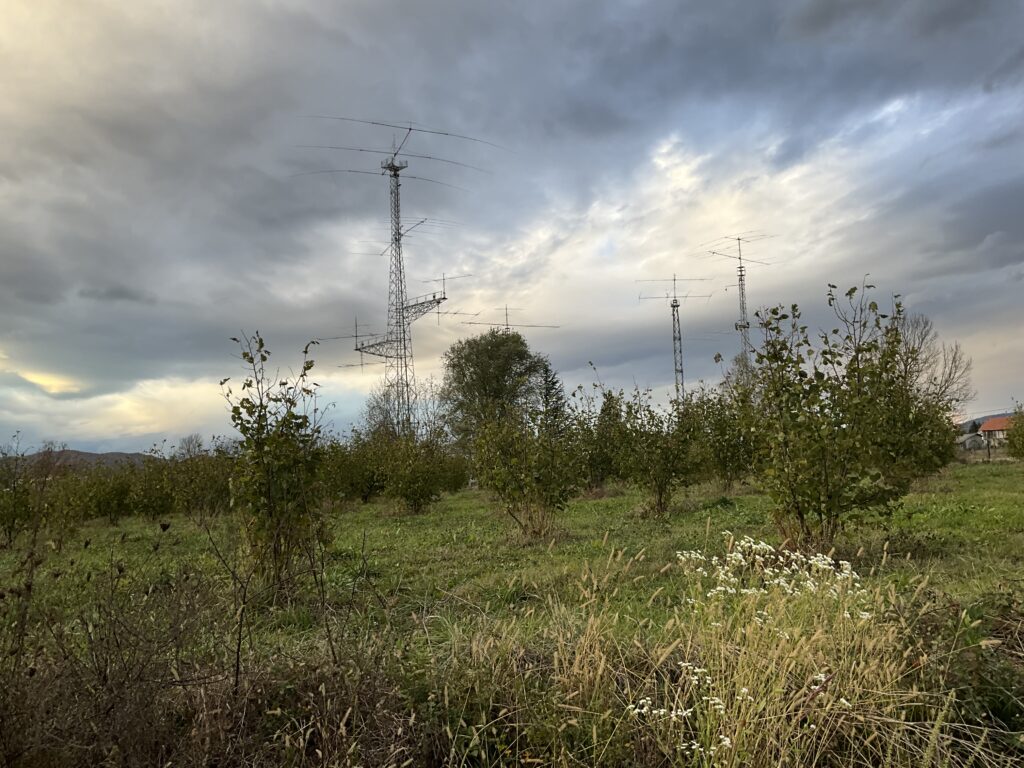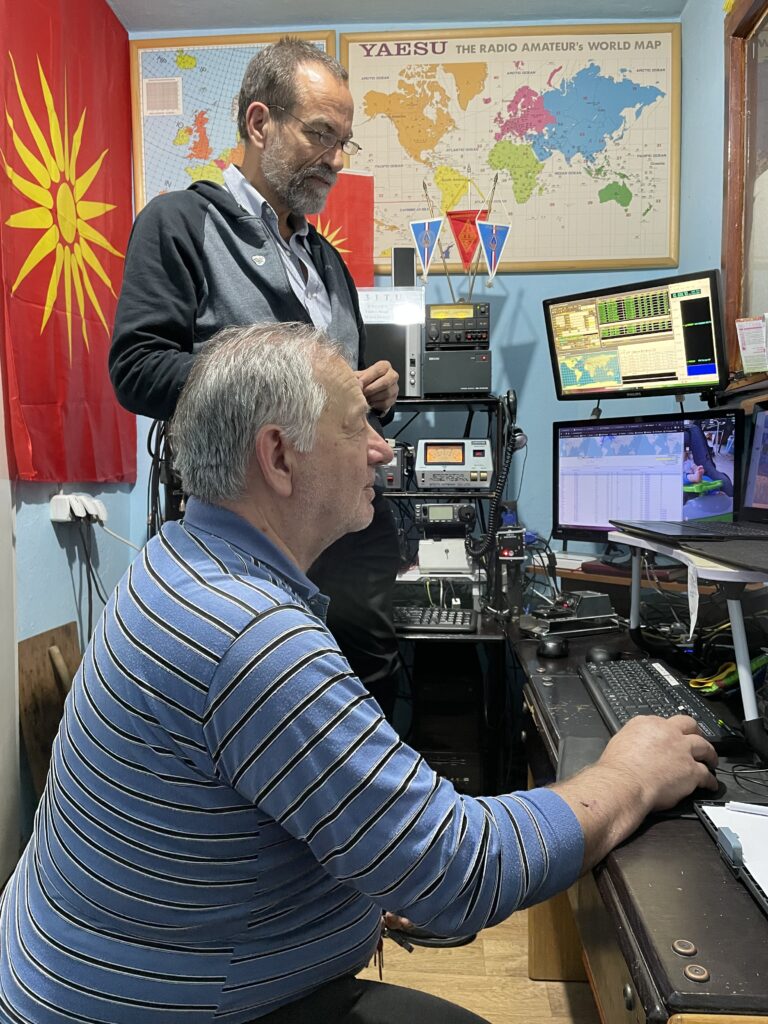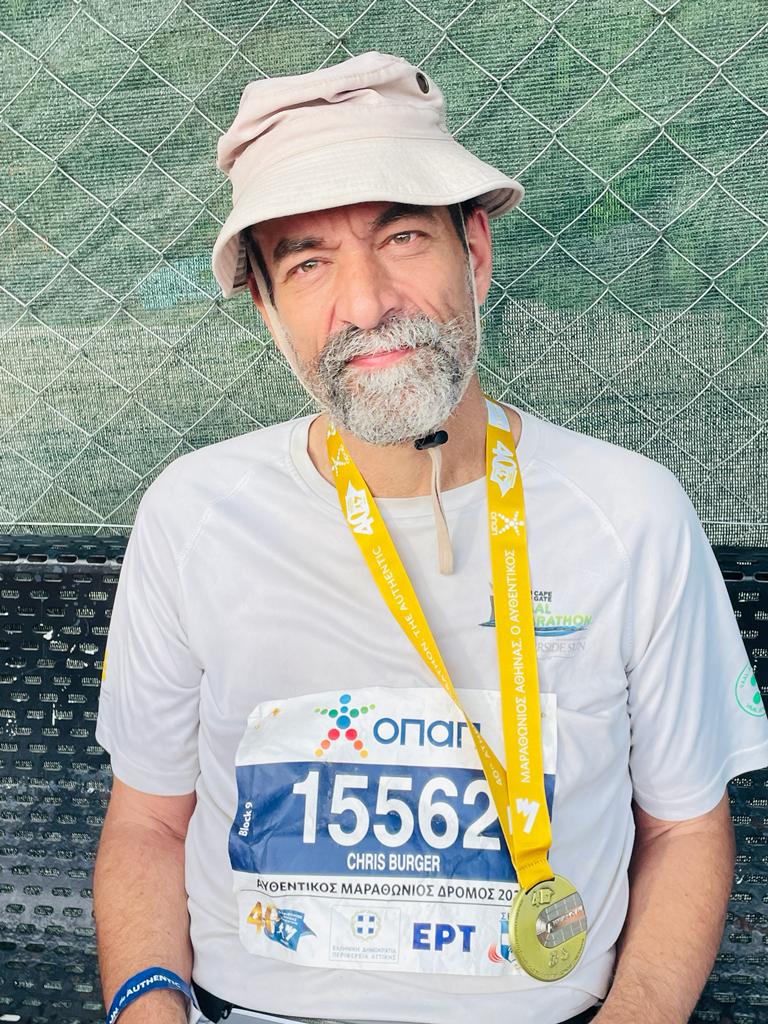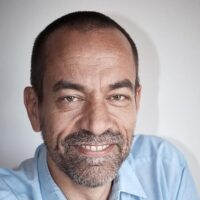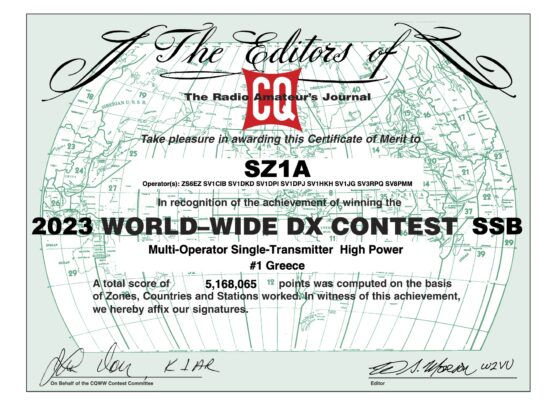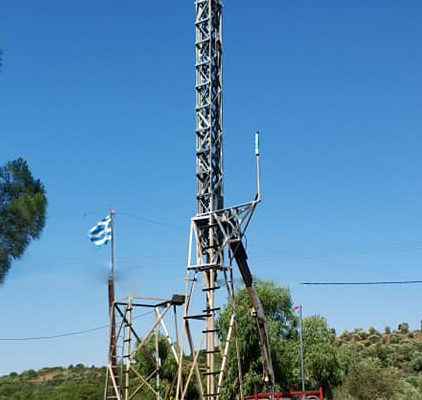Copyright © 2024 Chris R. Burger ZS6EZ - All rights reserved. A more comprehensive version of this story appeared in the March edition of Practical Wireless.
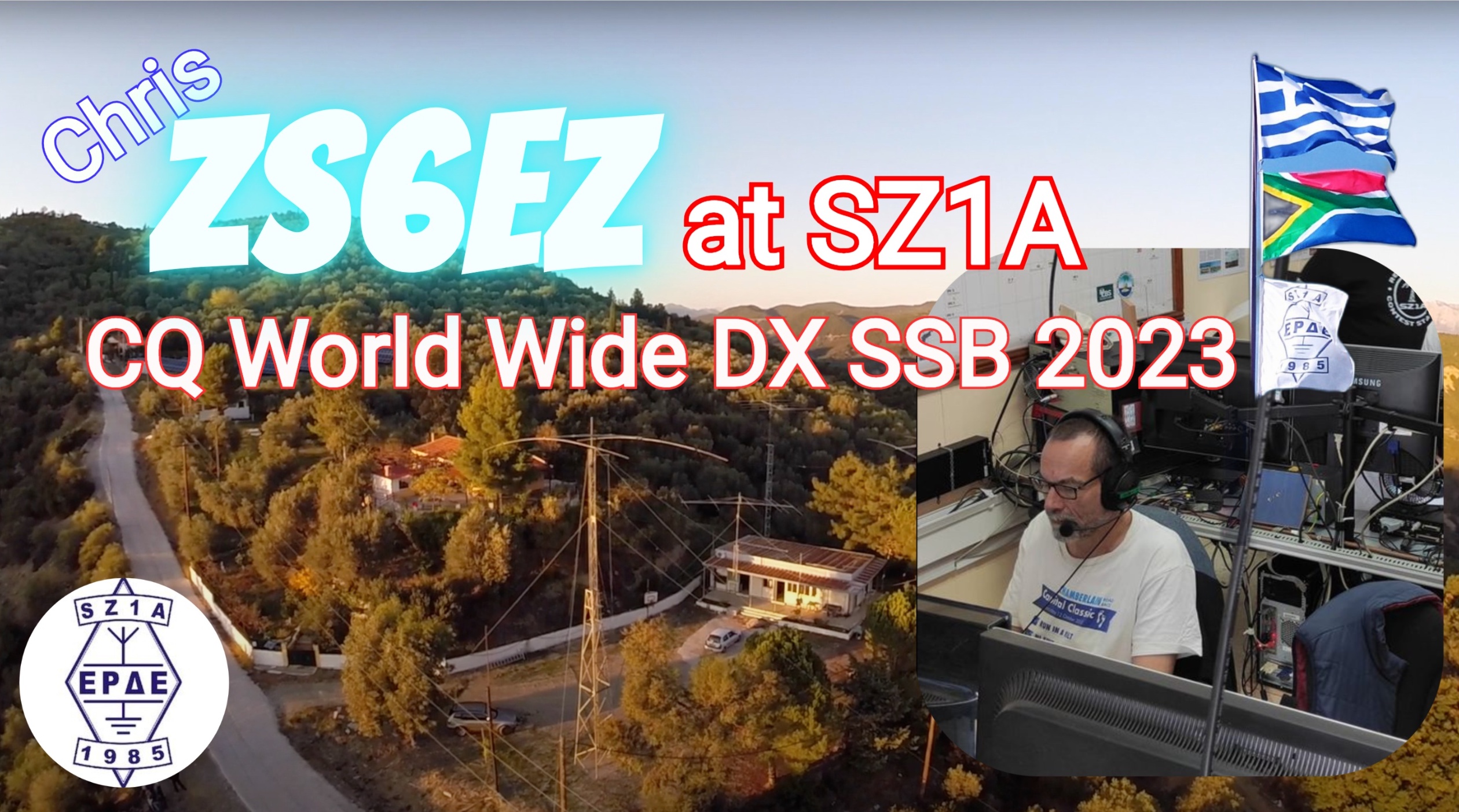
Planning
During 2023, I started wondering whether it was possible to run the original marathon route, just like Phidippides did. I discovered that there is an annual Athens marathon on that route. I fondly renamed it the “Marathon marathon”. I entered and started making plans to see a few new countries in the vicinity. I had seen very little of the Balkans, so there was a lot of room to visit new countries.
I wanted to combine my visit with the CQ World Wide DX Contest. I preferred CW, at the end of November. I started enquiring about options in the area. Out of the blue, Chris Plumblee W4WF invited me to operate from Andorra as C37NL. I was very pleased. Unfortunately, work commitments late in the month made it impossible. I had to decline Chris’s offer and operate the Phone contest, then travel through the Balkans and then run the Marathon marathon.
I also wanted to operate radio from some of the Balkan countries. I obtained a Xiegu X6100 portable radio, with an 8:1 transformer and a random wire antenna neatly wound on a small clothes hanger.
Fortunately, licensing was easy. With my CEPT-compliant licence, I could operate from these countries with little paperwork. The one exception was Kosovo, which required a traditional licence application process. Local amateurs were helpful and I soon had an invoice for the licence.
My long-time radio friend Don Field G3XTT had operated from Greece last year. He highly recommended the Radio Amateur Association of Western Greece, who operate as SZ1A in most of the major contests. They, in the persons of Vasilis Kontothanasis SV1DPJ and Costas Stamatis SV1DPI, welcomed my enquiry with open arms.
Apart from the contest, the travels and the marathon, I also set up some meetings regarding aviation, with a view to obtaining a European pilot licence one day.
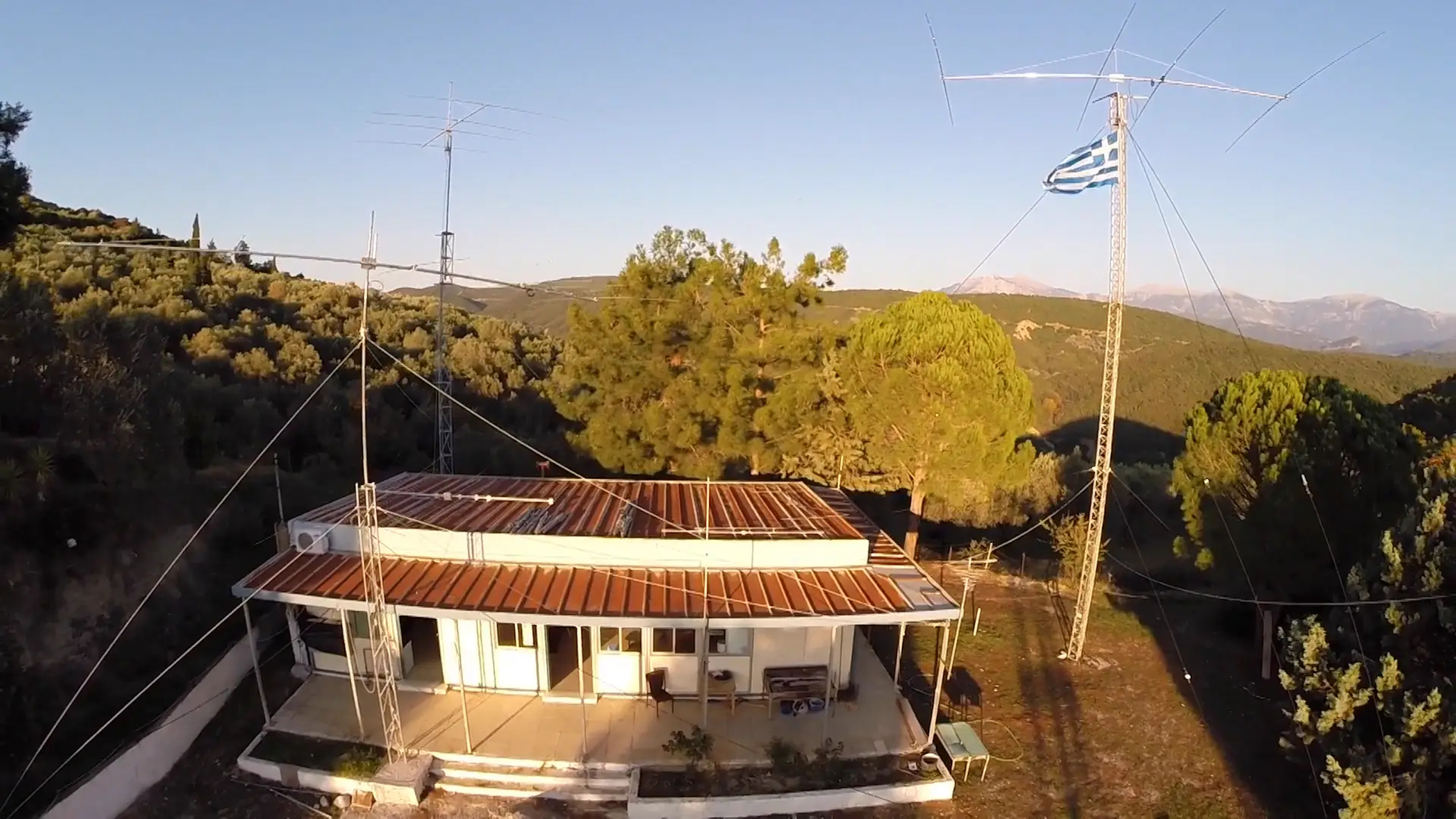
I had recently completed four semesters of Koine Greek at university. I was thoroughly familiar with the alphabet and could read with help from a dictionary. About two months before the trip, I started doing daily Greek exercises on Duolingo. I was hoping to at least make some progress toward conversational ability.
The SZ1A station is neatly laid out and constructed. I definitely gathered numerous station engineering and operating tips that should stand me in good stead.
On my flight through Istanbul, my paddle and a roll of insulation tape caused a lot of excitement while passing through security. I arrived in Athens the day before CQWW Phone. Vasilis picked me up at the airport for the three-hour drive to Agrinio. After lunch in the village, we tackled the steep roads to the station.
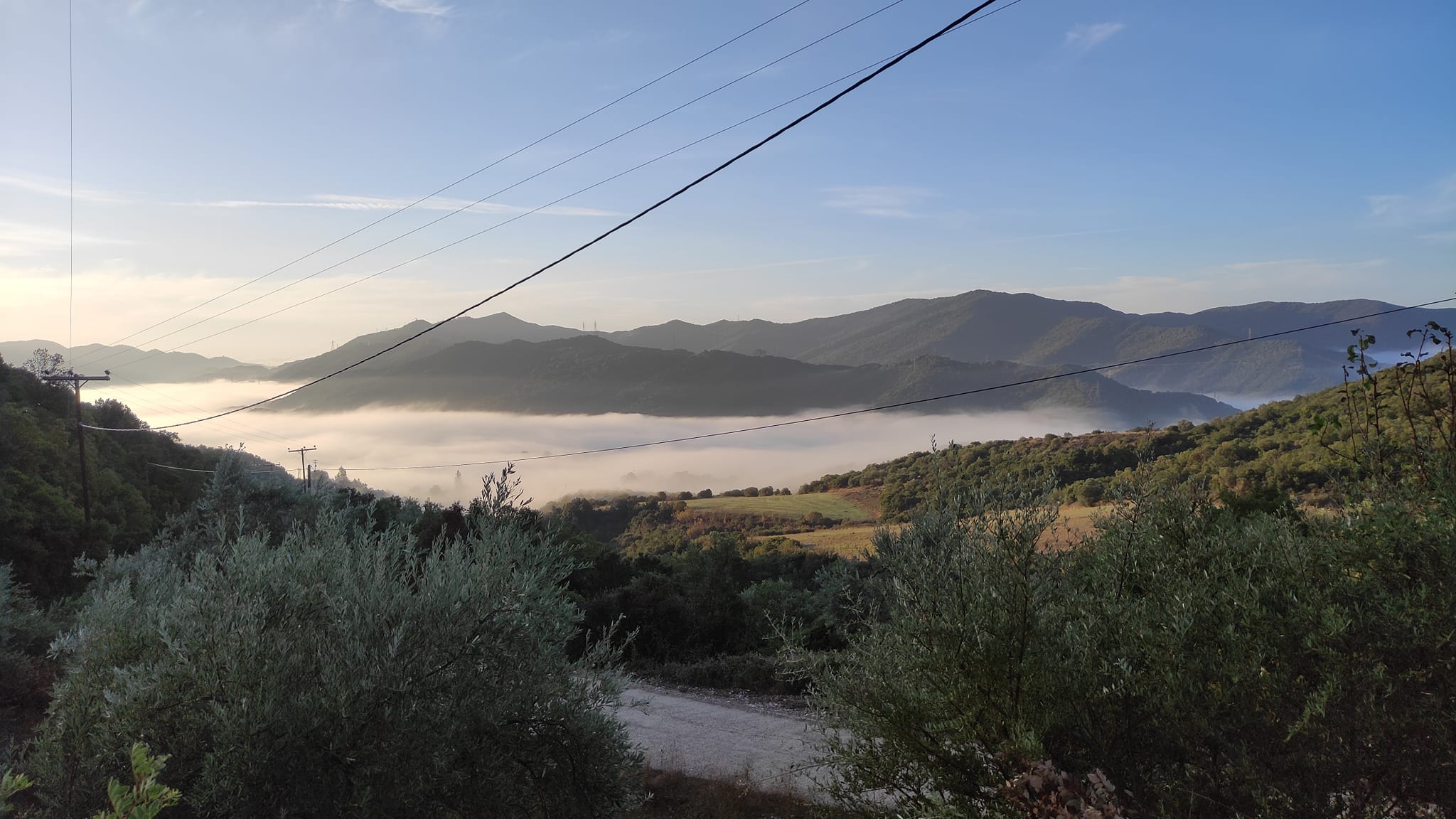
The contest
I was thrilled to see a South African flag on the tower, along with the Greek flag. Not long after our arrival there, other operators started arriving.
Apart from SV1DPI and SV1DPJ, the crew included SV1CIB, SV1CQG, SV1CQK, SV1DKD, SV1HKH, SV1JG, SV1SN, SV3RPQ and SV8PMM. Some work had to be done to get everything ready, but the work did not preclude a hearty meal. To my disappointment, I understood virtually nothing. It is no wonder that the saying is “it’s Greek to me”, as opposed to Italian or German or Japanese, all of which I’ve had some success with, with far less effort. Fortunately, most of the crew spoke enough English to get by, much like I do.
Our entry would be in the Multi-Operator Single-Transmitter High Power category (Multi-Single HP). We were allowed to have one signal CQing on the air at all times, with a second station looking for multipliers. There are some limitations on how often you may change bands. At SZ1A, there is also a third station that operates in the running station’s band (ie. an Inband station), looking for other contacts and multipliers. These two stations are interlocked to ensure that only one of them can transmit at a time.
I hadn’t regularly operated radio for more than a decade. I did a few contests from offshore locations and some limited portable operations from foreign countries, but nothing from home. I wondered if I would remember how to operate a radio. I certainly didn’t want to be the weakest link!
There is some technique to operating the in-band station effectively, both for the in-band operator and for the running operator.
The entire contest was divided into four-hour slots. I was rostered to operate for five slots, for a total of 20 hours. Some slots were on the running station, while others were on the secondary stations. In general, the secondary sessions consisted of half multiplier and half in-band operation.
The running station and the multiplier station were well within my realm of experience. I quickly regained my rhythm and I could effortlessly run the stations. I had lots of fun. I managed to make many contacts in German, Spanish, French, Japanese, Italian, Dutch and—to my surprise—even in Afrikaans. The only time when I was caught off-guard was when I was called by Greek stations in Greek…
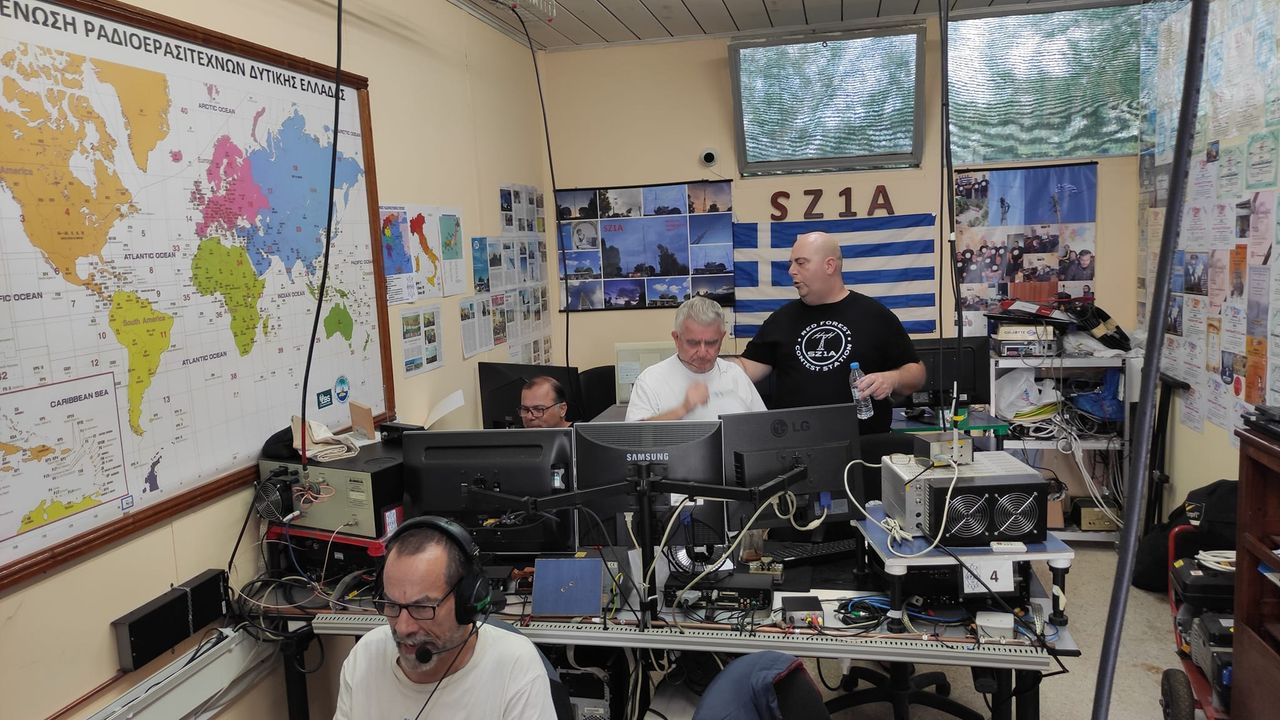
The in-band station was not so easy.
There is some technique to operating the in-band station effectively, both for the in-band operator and for the running operator. It is relatively difficult to work stations in-band without disrupting the run station’s rhythm. Obviously, as the run station’s rate increases, it may not make sense to try and work other stations on the band at all, except maybe for multipliers. I had no previous experience, so I had to learn some new tricks. There were significant differences between operators, necessitating some technique adjustments.
Multi-operator contesting has its attractions. In single-operator contests, I have often suffered extreme fatigue, even to the point of hallucinations. Multi-operator contesting allows some rest. I even managed to do a 20 km run in the mountains. I was intrigued to notice an almost total absence of animals, even birds. Perhaps the numerous shotgun shells had something to do with it.
I especially enjoyed some of the local tales, including the support this club had provided to Monk Apollo SV2ASP/A, a local boy from a nearby region who became a legend in amateur radio as the sole operator from Mount Athos for decades.
Multi-operator contesting has its attractions. In single-operator contests, I have often suffered extreme fatigue, even to the point of hallucinations.
I kept my eyes open the whole weekend, looking for tips to employ when I commission my own multi-operator station in the coming years. The SZ1A station is neatly laid out and constructed. I definitely gathered numerous station engineering and operating tips that should stand me in good stead.
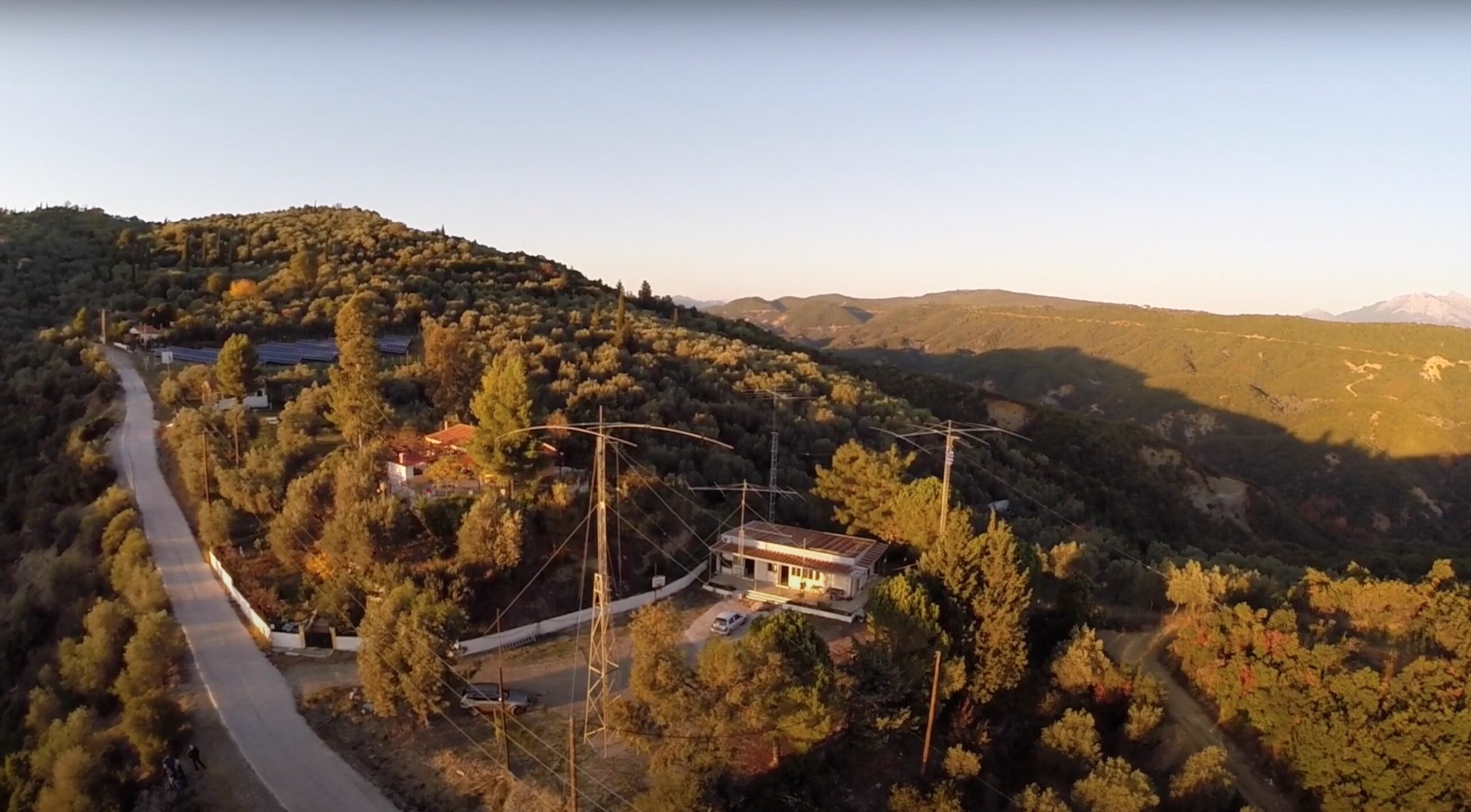
Travels
On Monday, after the conclusion of the contest, Vasilis dropped me off in the outskirts of Athens. I caught a train to the tourist spots and walked a lot. Around sunset, I made my way to the airport for a rental car. None of the companies would permit their cars to cross Greek borders. I needed a car for my aviation appointment the following day, a seven-hour drive away. I could not find an affordable one-way rental, so I would have to leave the rental car in Thessaloniki while travelling in the neighbouring countries.
As soon as my friend Alet landed, we set off toward Kavala in the northeast (SV2). After my business meeting with the flying school, I flew with one of the instructors. I was able to get some nice pictures of the Mount Athos peninsula from this unusual angle. The instructor pointed out the remains of Philippi, now covered by the modern town of Lydia. Later research revealed that Paul had landed at Kavala and spent much time in the area. Inadvertently, the Pauline connection became a theme in our Greek travels. We visited many related destinations during the rest of our trip.
For the moment, though, my target was Mount Athos. Many orthodox Christians make the pilgrimage. Only 10 unbelievers (including all non-orthodox Christians) are allowed daily.
I had to face a brusque interrogation and pay before obtaining the precious Diamonitirion. Passing the Docheiariou monastery on the ferry, I spotted the green-painted Yagi that I had been told about, still there four years after Apollo’s death. The paint was an effort to avoid unwelcome attention.
Mount Athos was the 100th country I have visited. I wanted to walk from Dafni to Karies. It was soon obvious that this project would not fly. The terrain is very steep and the road surface is too rough for my carry-on suitcase’s wheels. The bus driver short-changed me, making the trip very expensive. Once at Karies, I tackled the walk to Koutloumousiou monastery, where Apollo’s successor Iakovos SV2RSG is supposed to be. The situation was very confusing. Road signs are in ancient Greek script, using abbreviations that I didn’t recognise. I soon noticed that there were Koutloumousiou signs everywhere, some pointing in opposite directions and some in the direction I had come from.
After a two-hour search, I finally found the monastery. It turns out that some of the signs pointed to sketes, small communes associated with the main monastery. I was given curt instructions: “Church at 16, eat at 17, room at 18”. My questions were met with a blank stare.
The church service was a new experience. The Orthodox way is very different to what I am accustomed to. The meal was wholesome but spartan, accompanied by reading from a prepared text. After 18:00, I found myself in a double-storey building outside the monastery, sharing a room with about six other pilgrims.
I found myself in a grotesque situation. Here I was in Mount Athos, in the Top 20 on the Most Wanted List on both Phone and CW, with a radio and an antenna and a valid Greek licence, unsupervised, yet unable to operate.
The next morning, I wanted to get back to Ourianopoli as soon as possible, as I had found a company in Sofia, Bulgaria that seemed to offer rental cars that can travel. Unfortunately, the early ferry was full. By the time I was back in Ourianopoli, it was too late. We set off to Pella for the night. Using a sloper from the balcony, I worked some stations as SV2/ZS6EZ after figuring out how to operate the radio. We enjoyed the museum in the morning, before finding exorbitantly expensive parking in Thessaloniki and catching a bus to Sofia.
Here I was in Mount Athos, in the Top 20 on the Most Wanted List on both Phone and CW, with a radio and an antenna and a valid Greek licence, unsupervised, yet unable to operate.
I became aware that there was an IARU Region 1 meeting in Zlatibor, Serbia. There were three delegates from the South African Radio League. I resolved to try and arrive in Serbia in time to see them.
That night, I operated as LZ/ZS6EZ from Sofia. The next day, YO/ZS6EZ was active from Pristol. After a 90-minute run and a swim in the Blue Danube, I underwent a very unpleasant drug test at the Romanian border post before being allowed to enter Serbia.
We were too late for the conference, but Hrane Milosevic YT1AD took us to a restaurant with local food before allowing me to use his superstation for a while as YU/ZS6EZ. I ran a string of Europeans and North Americans using the monster beam on 20m SSB. It is a lot more fun than a QRP radio and a wire! I especially enjoyed chatting to AA6AA and NQ4I for the first time in decades. The following morning, Hrane took us to a local flying club from where we flew over Hrane’s station and took some pictures. We stopped at a wine farm before returning home. Dave Sumner K1ZZ and Linda had just arrived. I hadn’t seen Dave in a decade. We spent several hours visiting at Hrane’s station before another delightful Serbian meal nearby.
Because of the delays around the rental car, time was tight. Hrane recommended that we avoid Sarajevo. In Visegrad, I operated as E7/ZS6EZ. Visegrad is the site of a bridge that became the topic of a Nobel Prize-winning book about the Balkans: The Bridge on the Drina, by Ivo Andrić. It is recommended as the best source for understanding the ongoing Balkan conflicts.
The following morning, we had a delightful lunch with Ranko Boca 4O3A and Dragan Djordjevic 4O4A, before visiting Ranko’s 4O3A.com factory. I operated as 4O/ZS6EZ. Their contest toys are impressive. One day when I’m big…
After a harrowing night-time drive on narrow, winding, bumpy and potholed roads through the Accursed Mountains, we spent the night at Peshkopi on the eastern border. Operating as ZA/ZS6EZ was an intense experience. In my youth, Albania was the Most Wanted DXCC country. My role models lacked only Albania at one point. Only with ZA1A in 1991 did the situation change. And here I was, operating from ZA with CEPT paperwork!
In Skopje, I operated as Z3/ZS6EZ from Vlado Shutevski Z31TU’s rooftop station. I worked Europeans and Americans on 17m CW for a while. The following morning, I flew from a local airport before driving to the nearby Kosovo border. We left the car at the border post and walked to nearby Elez Han for lunch. Unfortunately, I could not operate, as I was unable to pay the invoice for the licence, despite attempts from three countries. Alet attracted considerable attention, as she was initially the only woman in the restaurant.
A stop in Sofia resulted in a parking fine at the bus station. We returned the rental car and caught the bus back to Thessaloniki to recover the other rental car.
The radio portion of the trip had now come to an end. I had visited 10 new DXCC entities, operating in eight of them. I had now visited 108 countries and operated from 41.
I now had to focus on the “Marathon marathon”. We took a trip via Berea, Corinth and Mars Hill to Athens, where I collected my race number. The Sunday was spent on a leisurely jog from Marathon to Athens along with 23,000 friends. I was ill-prepared and without insurance cover, so I took it very easy to minimise the risk of a mishap. We finished in the Panathanaic Stadium. It was quite an experience.
I am grateful to the Radio Amateur Association of Western Greece for their hospitality and camaraderie. Operating from SZ1A was a great privilege.
The following day, we drove the marathon route and took some pictures before catching the flight home.
Retrospective
After more than a decade of inactivity, I really enjoyed this trip.
I am grateful to the Radio Amateur Association of Western Greece for their hospitality and camaraderie. Operating from SZ1A was a great privilege. There is something to be said for operating a contest with great hospitality, without having to stay awake for 48 hours and without having to do several days of paperwork afterwards.
There is also a great fascination in operating with a piece of wire and a portable radio that fits in the palm of your hand.
It really is all magic!
Copyright © 2024 Chris R. Burger ZS6EZ - All rights reserved.
